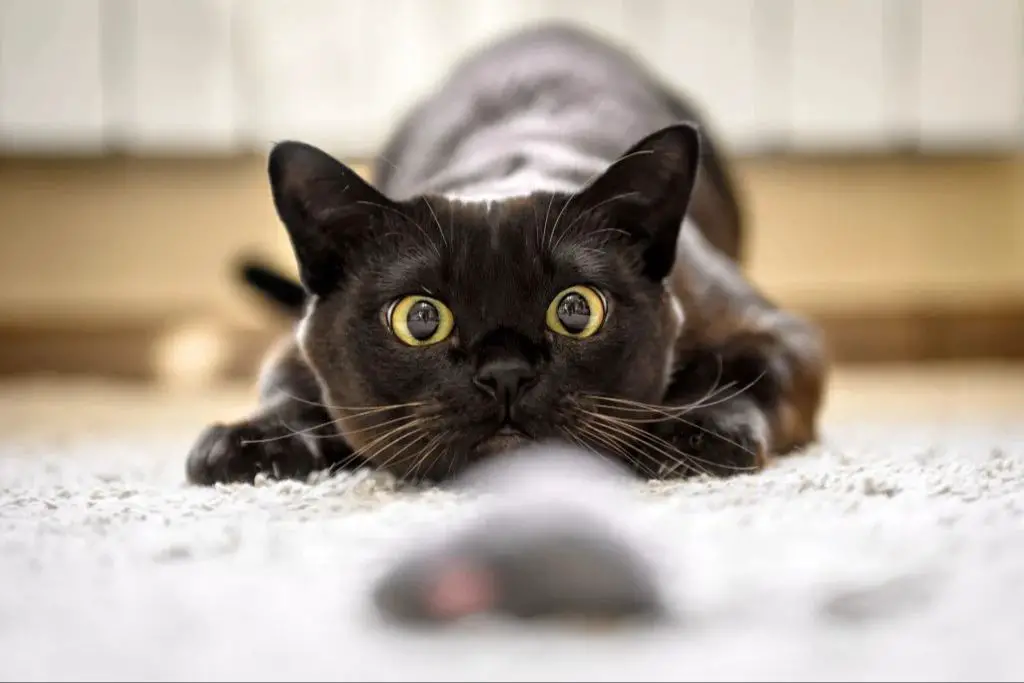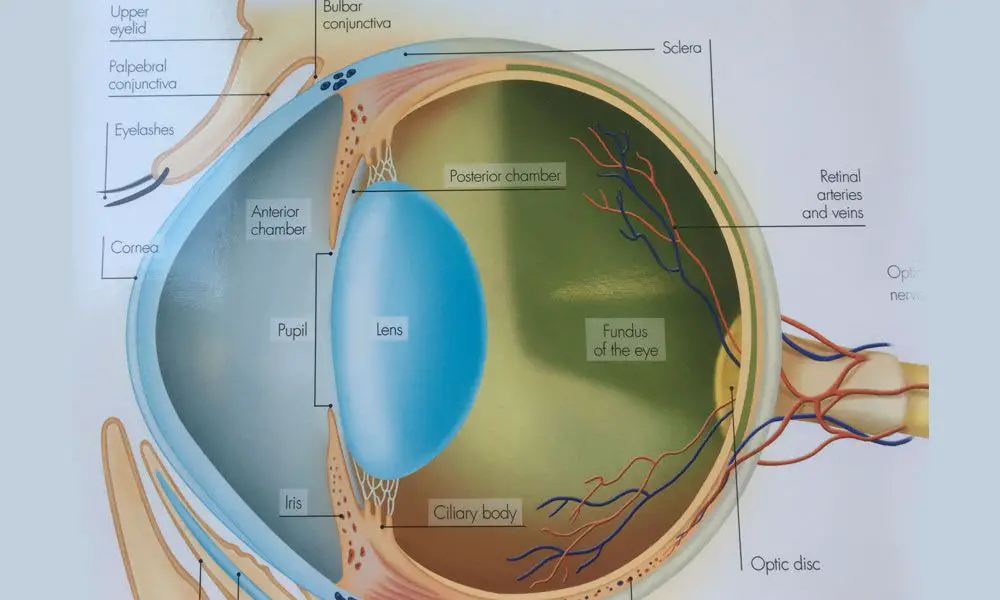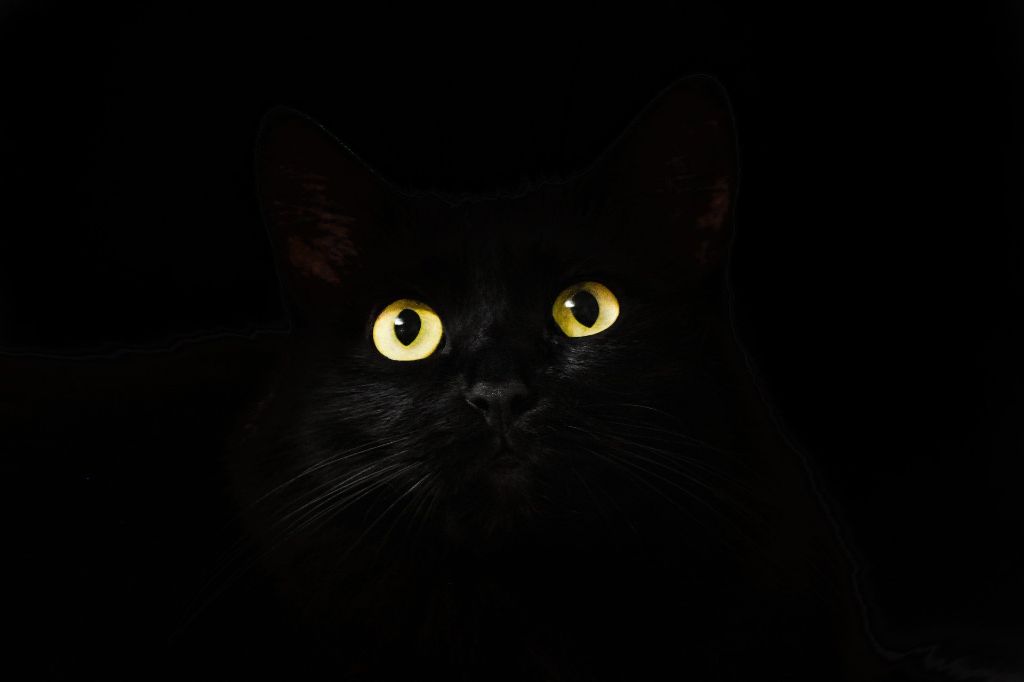Cats are well-known for having excellent night vision compared to humans. While we struggle to see in low light, cats are able to see just fine at night. In this article, we will explain the reasons why cats can see so much better in the dark than humans can. We’ll explore the various adaptations and features of cats’ eyes that enable their superb night vision capabilities.
Cats Have Larger Eyes

Cats’ eyes are much larger in proportion to their head size compared to human eyes. While human eyes take up about 5% of our facial area, cat eyes can take up to 50% of their face. This allows significantly more light to enter the eye and strike the retina 1. The large corneal surface area combined with other adaptations allows cats to see well in low light conditions.
Increased Rod Cells

Cats have a significantly higher concentration of rod cells in their retinas compared to humans. Rod cells contain a light-sensitive pigment called rhodopsin that allows them to detect dim light and see in low-light conditions. The high amount of rod cells gives cats excellent night vision and allows them to see in light levels 6 times lower than what humans need to see.
While humans have more color-detecting cone cells, cats have far more rod cells. Rod cells are also more sensitive to light and motion than cone cells. This difference in concentration and sensitivity is a key reason cats can see so well in the dark compared to humans.
Tapetum Lucidum

The tapetum lucidum is a reflective layer located behind the retina in cat eyes that allows light to pass through the retina twice. This structure acts like a mirror and causes the eyeshine effect that makes cats’ eyes glow in low light conditions.
The tapetum lucidum consists of stacks of guanine crystals that reflect visible light back through the retina. This doubled exposure to light stimuli allows cats to see much better in darkness compared to humans.
By bouncing light back onto the retina, the tapetum lucidum improves cats’ ability to see in low light conditions by up to 6 times. It works with the rod cells in the retina to amplify dim light so cats can detect the slightest movements and see shapes and objects clearly at night.
According to studies cited in [Source 1], the tapetum lucidum gives cats superior night vision compared to other mammals. The eyeshine caused by the tapetum lucidum also helps cats see better while hunting at dawn and dusk.
Pupil Adjustments

Cats have pupils that can open very wide to allow in more light in low light conditions. According to a Reddit post, cat pupils can expand by 135-fold compared to only 15-fold in humans. This expansion allows much more light to hit the retina and improves cats’ ability to see in the dark.
The post explains that cat pupils work like “built-in night vision goggles” with their extreme ability to expand and contract. Whereas the average human pupil size ranges from 2 to 4 mm, a cat’s pupil can range from 1.5 mm up to 8 mm when fully dilated. When a cat’s surroundings are dark, muscles controlling the iris cause the pupil to open wide to maximize the amount of light entering. This creates a large opening for light to pass through the eye and hit the retina, improving night vision.
So in summary, the expansive range of cat pupil dilation from a slit to wide open allows cats to dynamically adjust how much light enters the eye based on ambient lighting. In dark conditions, cat pupils can open wider than human pupils to allow in more light and see better at night.
Motion Detection
Cats have superior motion detection abilities in low light conditions, which is important for their hunting skills. This is due to the high concentration of rod cells in their eyes compared to humans. Rod cells are responsible for peripheral vision and detecting movement. While humans have more cone cells for color vision, cats rely more on the rods.
Cats can pick up the slightest motions, even in near total darkness. Their motion detection covers a wide field of vision, allowing them to spot prey moving at the edges of their view. According to some sources, cats may be able to detect motion in light levels up to 6 times lower than humans. This acute sensitivity and wide-angle motion detection gives cats a critical hunting advantage at night.
Peripheral Vision
Cats have a much wider field of peripheral vision compared to humans. While humans have a visual field of around 180 degrees, cats have a visual field of about 200 degrees (Source). This allows cats to detect movement coming from the sides more easily than humans can. A cat’s peripheral vision is especially important when hunting, as it allows them to spot potential prey moving in the periphery while their eyes are facing forward.
Having a wide scope of peripheral vision gives cats an advantage as predators. Even the slightest motion detected in their periphery will catch a cat’s attention. This allows them to hone in on prey more effectively. Their peripheral vision field is wide enough that they can see behind themselves without having to turn their head. Overall, the expanded peripheral vision cats possess aids their hunting skills and ability to detect motion.
Color Vision
Cats do have some color vision, but it is limited compared to humans. Cats see primarily in shades of blue and green. Reds, pinks, and browns can appear more grey or neutral to cats [1]. This is because cats have very few cone cells, which detect color, and mainly rely on rod cells which detect motion and light levels. Cats have evolved to prioritize motion detection over color vision, which aids their hunting abilities. While cats can see some color, they rely more on distinguishing contrast and brightness differences, along with detecting movement.
Whiskers
Whiskers serve as an important sensory tool for cats in low light conditions. A cat’s whiskers are highly sensitive tactile hairs that are connected to nerves deep within the skin. They help cats detect and measure objects, spaces, and air currents around them through sensation and vibration. This allows cats to navigate smoothly in the dark without bumping into things.
Whiskers extend out to the width of a cat’s body, giving them a good sense of the space they can fit through. The whiskers also detect changes in air current, which alerts cats to movements of potential prey or threats. Even the slightest brush against the whiskers triggers a response in the cat. In low light when vision is limited, cats rely heavily on their whisker sensation to build a mental map of their surroundings and move about gracefully. This whisker-sense compensates for their poor vision in the dark and is an adaptation that allows cats to be effective nocturnal hunters.
Conclusion
In summary, cats have evolved impressive adaptations that allow them to see extremely well in low light conditions at night. Their large, sensitive eyes with increased rod cells maximize light intake. The reflective tapetum lucidum behind their retina bounces back any light that passes through, giving the light a second chance to stimulate the photoreceptors. Their slit pupils and retractable pupils further optimize light collection. Cats can also adjust their pupils to tiny slits in bright light. Their superior motion detection skills, enhanced peripheral vision, and sensitive whiskers also give cats an edge when hunting at night. While cats don’t see color as vividly, their low light vision is unparalleled in the animal kingdom. After millions of years thriving as successful nocturnal hunters, cats have numerous anatomical and physiological adaptations that enable their exceptional night vision.

